There are a few places in Hawaiʻi where I am deeply moved by what’s happening there.
And just this weekend, I was able to add yet another one of these magical places on my list.
Hakalau Forest National Wildlife Refuge on the windward slope of Mauna Kea, Hawai‘i, was that special place. This 32,733-acre forest was established in 1985 to protect and manage endangered Hawaiian forest birds and their rainforest habitat.
There are only a couple of places in the state that rival this forest in terms of diversity of native birds.
Of critical concern was the ‘alalā (Corvus hawaiiensis), whose wild population, known only from the west side of the Big Island, gradually declined to only a single pair in 2002. As of 2008, however, about 50 ‘alalā are in captivity at the Keauhou and Maui Bird Conservation Centers on Hawai‘i and Maui islands, respectively. This area is also home to other endangered species, including the Hawai‘i ‘ākepa, (Loxops coccineus), Hawai‘i creeper (Oreomystis mana), ‘akiapōlā‘au (Hemignathus munroi), ‘io (Hawaiian hawk), and ‘ōpe‘ape‘a (Hawaiian hoary bat).
Every weekend volunteers come here to help with restoration and conservation, doing whatever needs to be done, from re-planting koa tree seedlings to adding native plants to the forest. Since 1989, more than 500,000 koa, ‘ōhi‘a, and other native plants have been planted in this area as part of the refuge’s reforestation program.
I was lucky enough to get invited by the folks from the Hawai‘i Audubon Society to participate in a service project — and then go birding the next day.
It’s not often people get to visit this unique refuge. (You have to make reservations a year in advance to come.) So I nabbed the opportunity, packed a sleeping bag and work gloves, and hopped on a plane to Hilo.
Here’s what my weekend in Hakalau looked like: (All photos taken with my iPhone 5. Long story.)
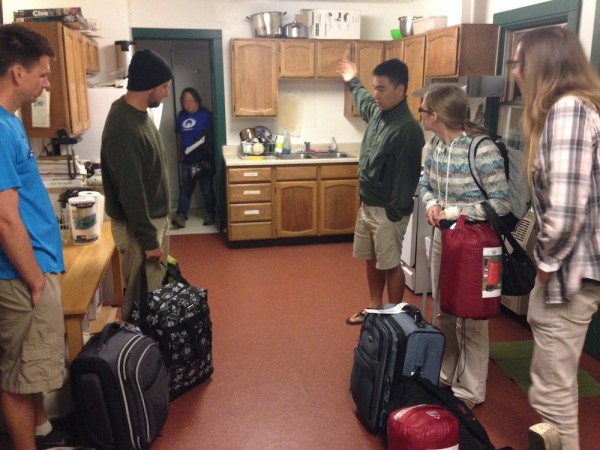
There were nine of us total, all staying in one of the volunteer cabins in the refuge. It took us about two hours to drive here from Hilo. There are several rooms in this cabin, all equipped with bunk beds — and no WiFi or cable. There isn’t even a phone here!
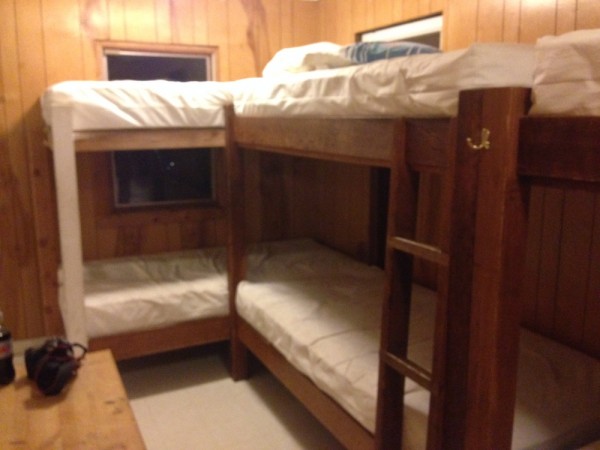
Our sleeping arrangements. We brought sleeping bags because these beds aren’t the cleanest.
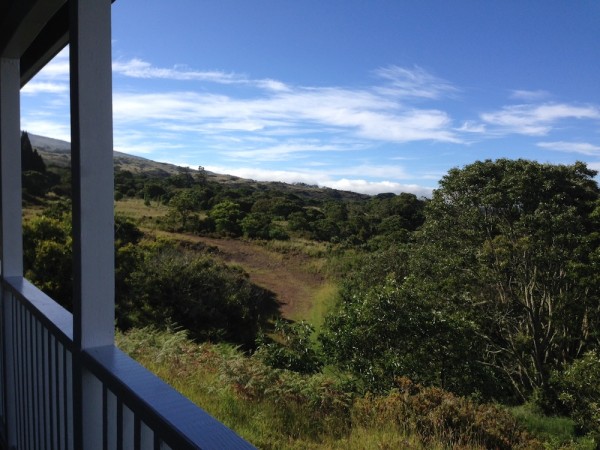
This was the view from our cabin, looking out over the forest preserve that’s littered with red-blossomed ʻōhiʻa and majestic koa trees.
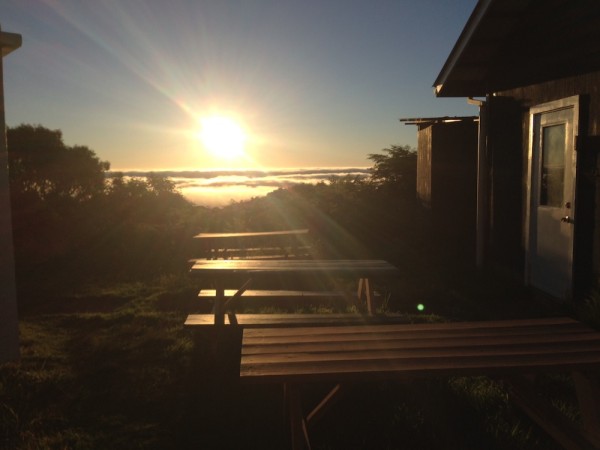
We got up the next morning — here’s the outside area with picnic tables — to a gorgeous sunrise. It was time to start our service project: fixing a sub-irrigation system and re-planting seedlings.
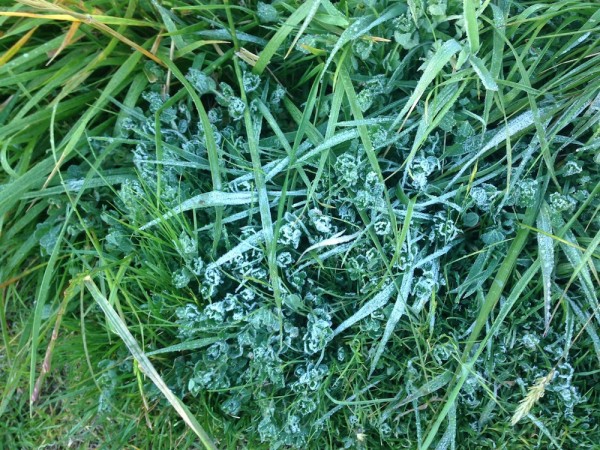
I’m not sure how cold it was — temperatures here will be vastly lower than in Hilo; we were at about 6,800 feet elevation — but there was frost on the ground.

First, we met with Baron Horiuchi, the only horticulturalist in the U.S. Fish and Wildlife Service who has been working in Hakalau for 18 years. He has propagated plant species never before propagated and actively experiments on new ways to germinate, propagate and out-plant endangered and common native plant species. He also oversees these volunteer-manned projects on the weekends. Busy guy!
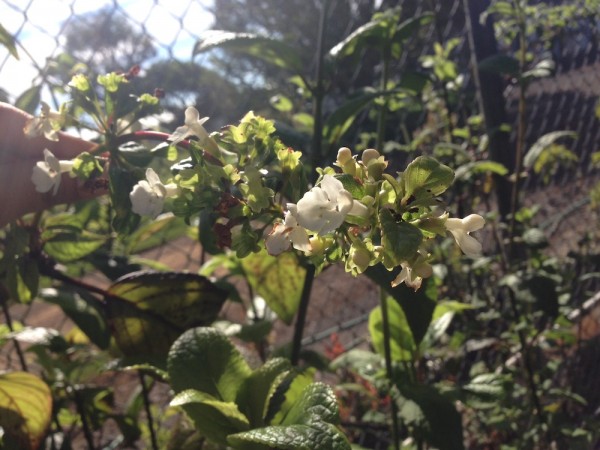
He took us on a tour of the facility, which included these rare native mint plant with flowers that smell like pikake (jasmine).
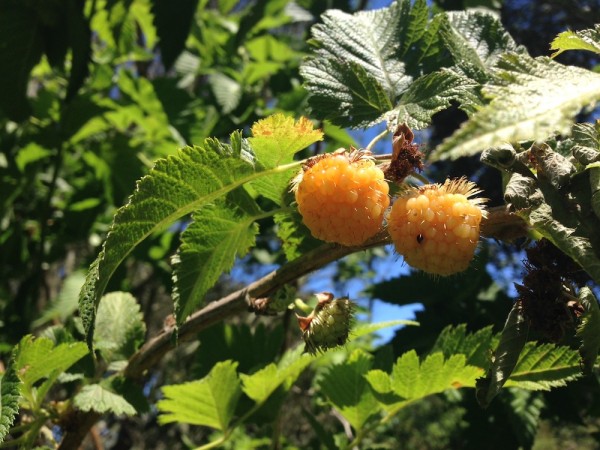
And here are yellow ʻākala berries — like raspberries.
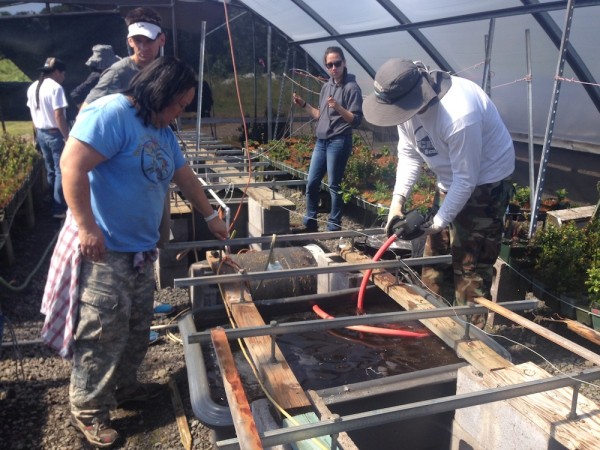
He quickly put us to work. (We were working alongside some Native American students visiting from the University of Idaho.) We disassembled this sub-irrigation system used for seedlings and smaller plants. The system conserved water, which is a vital resource here in Hakalau.
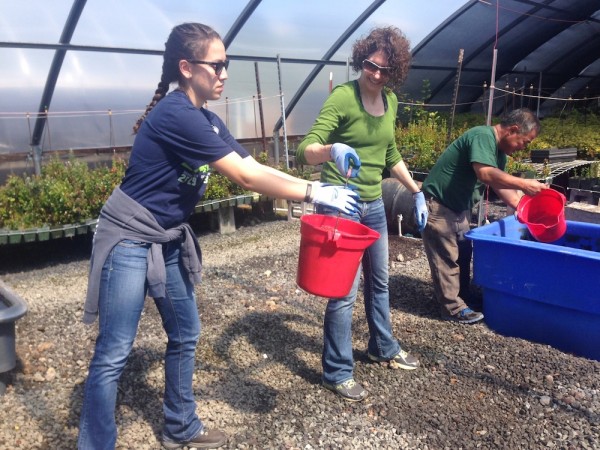
It was a total team effort, as birders and students worked side-by-side to get this job done.
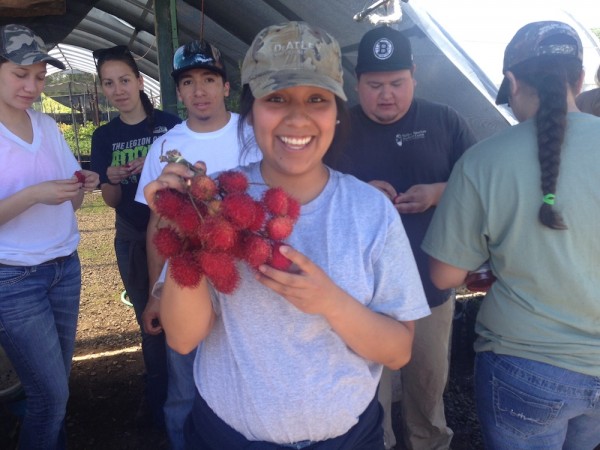
We took a break so the students, many of them who had never been to Hawai‘i before, could sample some of our island fruits, including lychee, mangosteen and robotan.
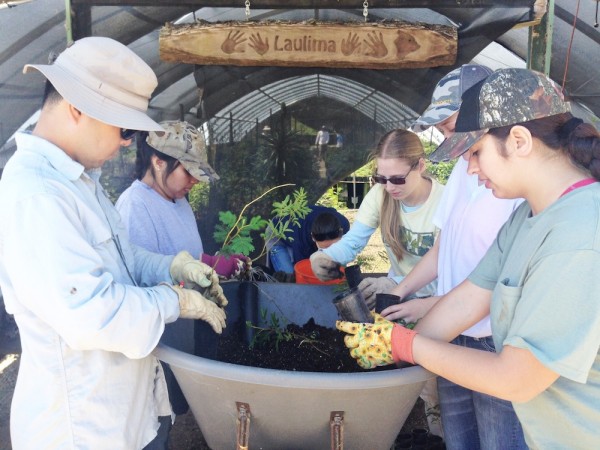
After our break, some of us re-potted koa tree seedlings, transferring plants to larger dee pots.
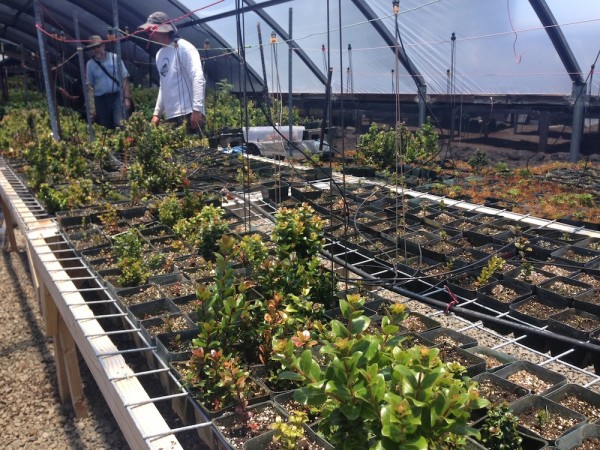
The rest of the group rebuilt the sub-irrigation system.
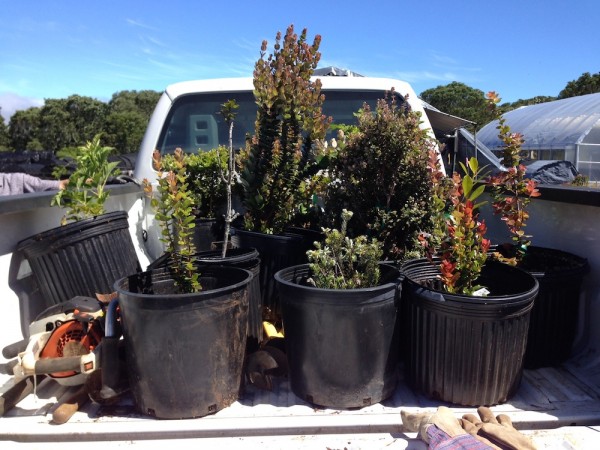
After that work was done, we planted native trees in the forest under the larger koa trees. The lush understory of the forest is fertile and perfect for these plants.
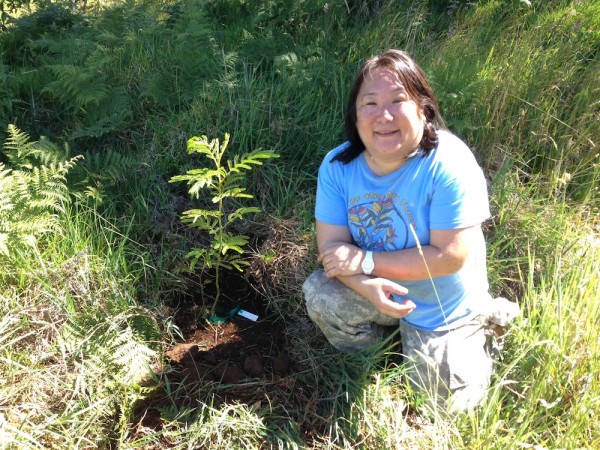
Each of us got to select a plant, whichever one we wanted, and plant it along the main road. (We also planted more native plants in another area of the refuge.
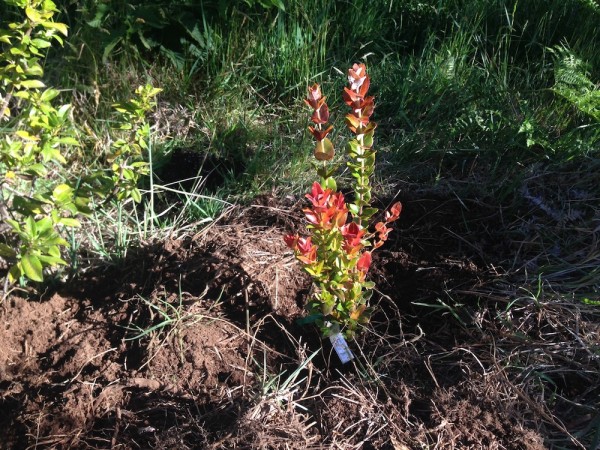
Here’s what I planted: a young ʻōhiʻa tree that looked like it needed to get out of its pot and into the sunshine. (I know the feeling!)
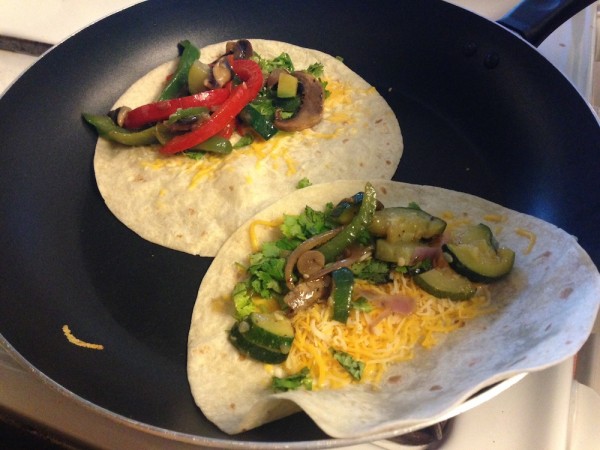
After a long day in the sun — it was actually pretty warm, considering the frost I saw in the morning — we headed back to the cabin and cooked dinner. We made vegetarian quesadillas, sat around and talked until 9 p.m., when we all went to bed. Birding the next day! Needed to get our rest!
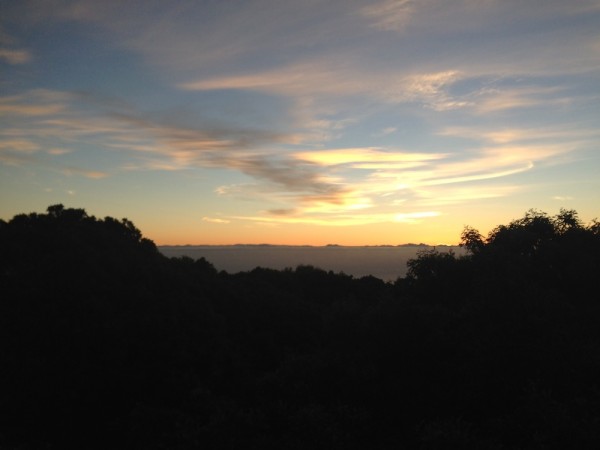
Hakalau Forest NWR is a special place in Hawai‘i, and one that I was privileged to experience. I don’t know when I’ll be back, but I’m just honored to have had the chance to visit, walk through, and add to this native habitat.

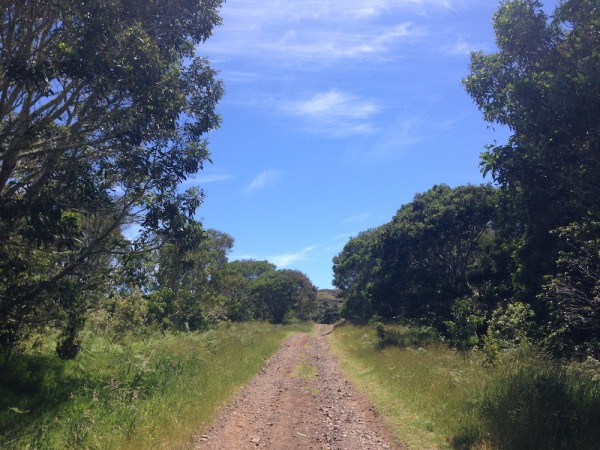
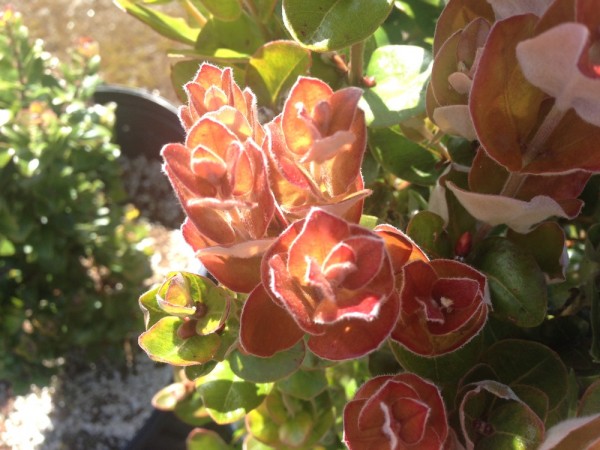


6 Comments
Wow! Great visit and all the wonderful volunteers who will keep Hawaii- Hawaii.
Yep, stoked I was invited! Can’t wait to go back! Gotta check on that tree!
Hello Cat!
Great job! Only one pixs of fuud. 😆
LOL, that’s all we ate!
CAT: Great to see someone propagating native plants and trees. Now begs the question, how come Oahu is filled with non-native flora? Too much albezia, banyan and monkey pod…need more koa, kukui, and ohia.
Aloha-
I I’m glad to know I’m not the only one who saw dead people at Hakalau, Baron told me about what you saw Sunday morning…amazing. I’m going up to Hakalau twice this year.
Where are the pictures of the forest?